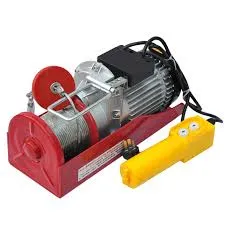


Understanding Pallet Truck Design An Essential Element of Material Handling
Pallet trucks, also known as pallet jacks, are indispensable tools in modern warehousing and logistics. Designed to facilitate the movement of goods in a safe and efficient manner, the design of pallet trucks has evolved significantly over the years to address various challenges in material handling. This article discusses key aspects of pallet truck design, emphasizing functionality, ergonomics, and technological advancements.
Principles of Design
At the core of pallet truck design lies functionality. These devices are primarily used for lifting and moving palletized loads. The most fundamental feature of any pallet truck is its structure, which consists of a fork, a chassis, and a hydraulic lifting mechanism. The fork is designed to slide under pallets, allowing for the easy lifting and transportation of goods. The chassis provides stability and support, ensuring that the truck can carry heavy loads safely.
One of the crucial aspects of design is the capacity and size of the pallet truck. Different types of pallet trucks are designed for various load capacities, typically ranging from 2,200 to 5,500 pounds. This capacity needs to be carefully balanced with the size of the forks to ensure compatibility with standard pallets, which usually measure 48 inches by 40 inches. Therefore, optimal fork length and width are essential to enhance usability across various applications.
Ergonomics and User-Friendly Design
Another significant consideration in pallet truck design is ergonomics. The ergonomics of a pallet truck play a vital role in optimizing the operator's experience and reducing the risk of injury. Modern pallet trucks are equipped with user-friendly controls, often featuring ergonomic handles that allow for easy maneuvering. The height of the handle is designed to reduce strain on the operator's back and arms, particularly during prolonged use.
In addition to handle design, the weight and maneuverability of the pallet truck significantly affect its ergonomics. Lightweight materials such as aluminum or high-grade steel are often used to construct these trucks, making them easier to operate and reducing operator fatigue. Moreover, swivel casters and load wheels enhance maneuverability, allowing the operator to navigate tight spaces and corners with ease.

Technological Innovation in Pallet Truck Design
Recent advancements in technology have led to the development of electric pallet trucks, which combine the traditional functionalities of pallet jacks with automation. These powered versions significantly reduce the physical effort required from operators when lifting and moving heavy loads. They are equipped with rechargeable batteries, allowing for extended operation without the need for manual labor.
Electric pallet trucks come with various features to enhance efficiency and safety. For instance, many models include built-in scales that allow users to weigh pallets during transport, reducing the need for separate weighing processes. Furthermore, some designs incorporate safety features, such as automatic braking systems and anti-tip mechanisms, ensuring both operator and load safety.
Another notable innovation is the integration of smart technology. Pallet trucks equipped with Bluetooth connectivity can communicate with warehouse management systems, allowing for real-time tracking of inventory and facilitating better organization within the supply chain. These technological advancements not only streamline operations but also enhance accuracy in inventory management, which is crucial in today's fast-paced logistics environment.
Sustainability in Design
Increasingly, sustainability is becoming a key consideration in pallet truck design. Manufacturers are exploring eco-friendly materials and processes to minimize the carbon footprint of production and usage. The use of recyclable materials in construction and the design of energy-efficient electric models are steps toward reducing the environmental impact of these essential tools.
In conclusion, the design of pallet trucks is a complex interplay of functionality, ergonomics, and technological innovation. As warehouses and logistics operations continue to evolve, so too will the design of pallet trucks. By focusing on user-friendly features, advanced technology, and sustainability, manufacturers can develop pallet trucks that not only meet industry demands but also enhance the operator’s safety and efficiency in material handling. As businesses strive for greater productivity and sustainability, the importance of effective pallet truck design cannot be overstated.



